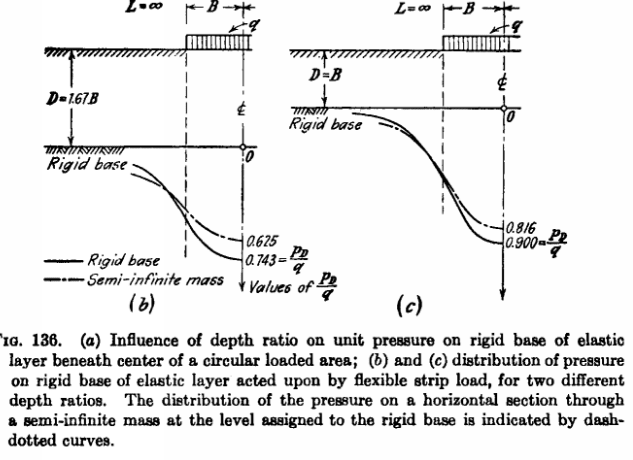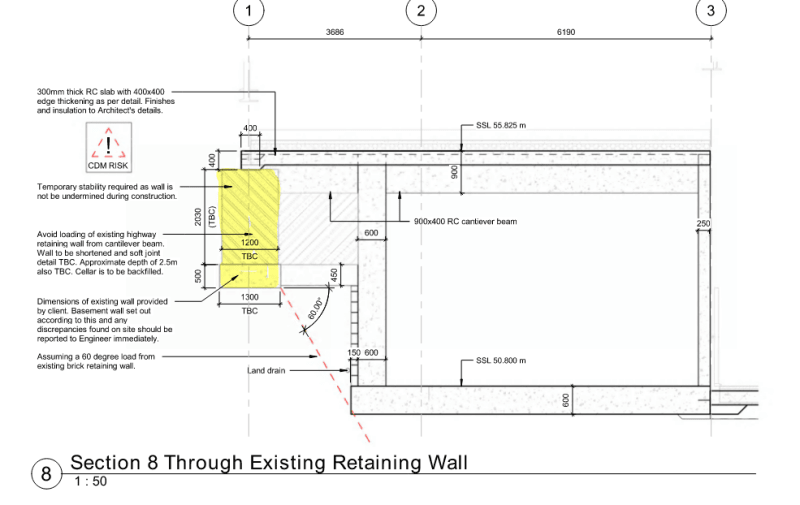Luke2020
Civil/Environmental
- Jun 4, 2020
- 11
Hi all.
I have a question that has no doubt been covered on this forum but I can’t find a solution.
Does tabulated data exist covering the angle of dispersion through different soil types?
I am to believe (depending on what is being checked, i.e settlement etc) that the angle is 30 degrees to 45 degrees. Is this 30 degrees from the vertical ( or 60 degrees from the horizontal as shown).

I have a gravity retaining wall in bed rock and I’m trying to argue a steeper load angle through the ground beneath to avoid an adjacent structure.
Any opinions, discussion or assistance as always is welcome.
Luke
I have a question that has no doubt been covered on this forum but I can’t find a solution.
Does tabulated data exist covering the angle of dispersion through different soil types?
I am to believe (depending on what is being checked, i.e settlement etc) that the angle is 30 degrees to 45 degrees. Is this 30 degrees from the vertical ( or 60 degrees from the horizontal as shown).

I have a gravity retaining wall in bed rock and I’m trying to argue a steeper load angle through the ground beneath to avoid an adjacent structure.
Any opinions, discussion or assistance as always is welcome.
Luke


